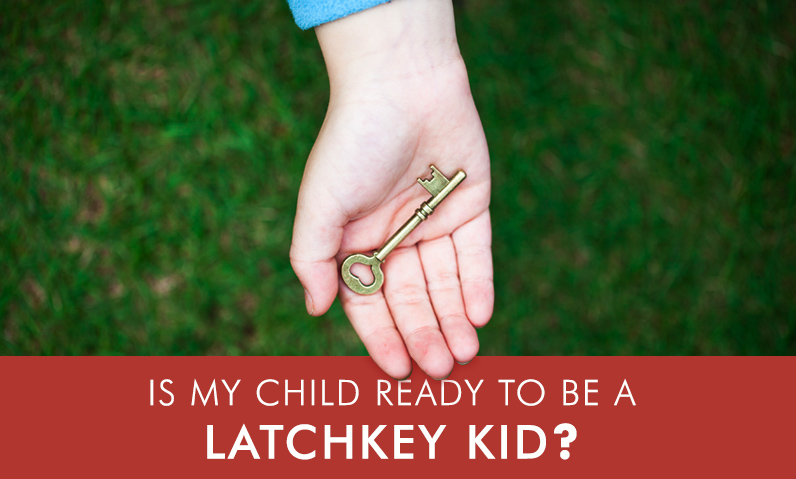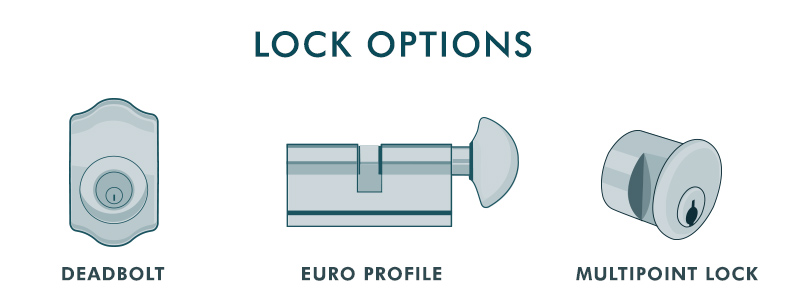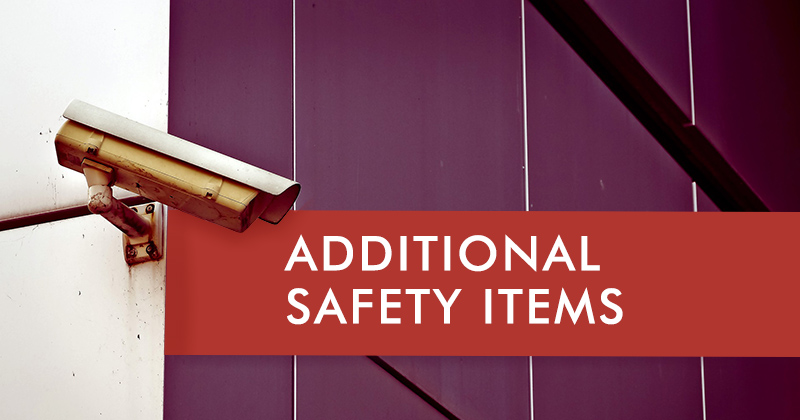Back-to-School Safety Tips for Latchkey Kids and Families
03/25/2019, 7:52 PM

For many families, a typical weekday means juggling school and work schedules. That can get complicated, especially when schedules conflict — your kid may need to leave early for before-school activities, or you might have to stay late at the office working on a challenging project.
Sometimes, you can’t reconcile your schedule with that of your little one, and your child will have to spend time alone and unsupervised. Staying home alone can help your child grow in independence and boost their confidence, but it can be a scary thought for many parents — how do you know if your child is ready for such a big step?
We know leaving your child alone can seem overwhelming, so we’ve compiled our best tips to make the transition as smooth and safe as possible. Keep reading to learn more about what it means to be a latchkey family, as well as some practical ways to keep your child safe while you’re away.
Going Back to School in a Working World
Once September comes around, school is already well underway in most parts of the U.S. Summer break has given way to school’s academic schedule, and the change in weather brings a change in family dynamic. For many families, September means school-aged children will spend afternoons alone at home while their parents or guardians finish up a day of work.
These children are latchkey kids, or kids who stay at home without adult supervision during some part of the day. Latchkey children are more common than many people think — in a survey of kindergartners through fifth-graders, one in 25 children said they were responsible for caring for themselves once school lets out, which adds up to roughly 15.1 million latchkey kids in the United States.
Is My Child Ready to Be a Latchkey Kid?
Kindergarten to fifth grade is a wide age gap — is there a “right age” to leave children alone? Unfortunately, there’s no perfect answer to this question, and the legal stipulations for latchkey kid age vary between states. In some regions, it’s OK to leave children between eight and 10 years old alone unsupervised. In others, a kid needs to be 11 or even 14. Many more don’t have any regulations, but to be sure, check your state’s requirements before leaving your child alone.
When considering whether or not your child is ready to be a latchkey kid, their emotional preparedness is sometimes more important than their physical age. Is your child prone to anxious or impulsive behaviors? Are they comfortable being on their own, even for several hours? Can they recall instructions under pressure?
A child’s emotional readiness does not necessarily correlate with their age. Some children tend toward anxiety and loneliness well into their teens, and don’t like to stay home alone. Others may swing too far in the opposite direction — bold to the point of impulsivity, they might not take the risks of being a latchkey kid seriously enough. Whether or not your child should become a latchkey kid depends on the temperament and readiness of each child, as well as your situation as a family.
Establishing Appropriate Latchkey Behaviors
Before the school year begins, take the time to develop some ground rules for your child while they’re home alone. Begin with how they should leave school — a latchkey kid’s routine begins the moment the final bell rings.
1. Leaving School
If you use a security system that requires a physical key, give your child a copy and tell them to keep it with them at all times. Don’t write a child’s name or your address on the key — if they lose that key, any identifying information could put your family in danger. Avoid hiding spare keys in obvious locations around your home, such as under flowerpots or doormats — thieves can easily discover these and can potentially put your child at risk.
Encourage your child to take the same route home from school every day, if possible by a highly visible and well-trafficked path. Tell them to avoid shortcuts through parking lots, alleys or wooded spaces, and to let you know if they have to stay late at school.
2. Arriving at Home
Tell your child to have their key ready when they approach the door to your house — if they fumble at the door, someone may notice. If the child notices anything looks off or suspicious — for example, an open window or a door that’s ajar — they should never enter the home or peek through a window. Instead, they should go to a trusted neighbor’s house and call you to let you know about the situation.
Once they arrive home, consider having your child call you while you’re at work. That not only lets you know they are safe, but allows both of you to touch base and discuss what the child should do with the rest of their afternoon.
3. During the Afternoon
Your latchkey kid now has an unsupervised afternoon on their hands. To make sure they use their time well, set up a few expectations. Should your child tackle a couple of chores while you’re at work? When should they dive into homework — before or after a break? Can they use the television or computer, and if so, for how long?
It might be beneficial to help your child make a schedule for their afternoon. As an example, a schedule could look like this:
- 3:20 to 3:30 p.m. — Get home and call parent or caretaker to let them know you’re safe.
- 3:30 to 3:45 p.m. — Change out of school clothes and make yourself a snack.
- 3:45 to 4:30 p.m. — Work on homework. Put on some fun music if the house feels empty!
- 4:30 to 4:45 p.m. — Complete your chores for the day.
- 4:45 to 5:45 p.m. — Free time! Letting your child have some unstructured playtime to de-stress is vital for their happiness and development.
- 5:45 p.m. — Parent or guardian arrives home for dinner.
Other questions to go over with your child include their friends — can friends come over, and for how long? Will you allow your child to go to a friend’s house after school?
Many parents choose to limit their child’s access to Wi-Fi while they’re alone. If you want to reduce your child’s screen time while you’re away, encourage them to work on other activities during the afternoon. Some example activities include:
- Writing in a journal or diary
- Working on a hobby
- Practicing a musical instrument
- Painting or sketching
- Reading a fun book
Establishing a few expectations not only helps your child structure their time, but it sets you up as still in charge of the house, even when you’re not physically present.
Securing the Home While Adults Are Away
You want to set your child up to succeed while you’re at work. To make sure your home is as safe as possible for your latchkey kid, here are a few factors to consider.
1. Make Dangerous Items Inaccessible
Before leaving your child home alone, make sure they cannot access any potentially threatening items. Dangerous objects include guns and other weapons, as well as poisonous or flammable materials and alcohol or prescription medication. Keep breakable valuables out of reach to prevent accidental damage. Store drugs in a child-proof location, but consider leaving mild painkillers available for headaches. If you allow your child to use any medicine, make sure they know the appropriate context and dosages.
2. Effective and Age-Appropriate Locks
Make sure all entrances to your home are secure — and this includes windows. Today, you can choose from a wide variety of lock options for your home, ranging from automated fingerprint locks to tried-and-true deadbolts, Euro profile or multipoint locks.
Whatever security system you choose, make sure your child knows how to operate it. Walk them through disarming an alarm if they accidentally set it off, and have them unlock and lock the door while you observe. Make sure they know how to open windows if they need to exit the house in an emergency.
3. Talk About Appliances
If your child handles common appliances inappropriately, it could be dangerous. Talk with your child and clearly explain what appliances they can use, and which ones to wait until an adult is present. Some machines to talk about include the dishwasher, microwave and washer and dryer.
Even with appliances they can access, walk your child through necessary safety measures. For example, tell your kid why it’s dangerous to hang off the door of the refrigerator — it could cause the whole fridge to fall. Consider having some easy, healthy snacks already prepared for your child to enjoy during the afternoon, or have ingredients available that don’t require knives or microwaving.
4. Basic Safety Measures
Before spending afternoons alone, your latchkey kid should know and have access to some basic safety essentials.
- Emergency contacts: Make a list of emergency contacts and their phone numbers, and put this list in a readily visible space such as the refrigerator. Include your work phone number and address, as well as the information of a trusted neighbor and family member. Access to emergency contacts helps your child feel safer and reduces their anxiety about being left alone.
- First-aid kit: Show them where the first-aid kit is, and explore the contents with them. Walk through various injury scenarios, and have them explain to you which items they would use.
- 911: Explain the proper use of 911. Make sure they know to give the operator their full address, and to stay on the phone until the operator tells them otherwise.
- Fire safety: Walk your child through the basics of fire safety, including when to use a fire extinguisher and emergency exits and protocol.
5. Dealing With Strangers
While your child is home alone, they should avoid answering the door or the phone unless they know who is knocking or calling. If they do encounter a stranger, they shouldn’t reveal they are home alone. Instead, help them think of other things to say, like, “I’m sorry, my mom’s busy in the kitchen right now — can I take a message?”
Walking your child through different scenarios does more than ease your mind — it helps them feel secure and prepared. Practice makes perfect, and the more you can run through different hypotheticals with your kid, the faster they’ll respond in real-life situations.
Additional Safety Items
Besides locks and first aid, there are more options to consider when transitioning your child to a latchkey schedule.
1. It Takes a Village
Make friends with trusted neighbors. They can provide extra eyes on your home while you’re away, as well as be an emergency contact for your child. Ask other parents in the community what they do with their children for more ideas. In some neighborhoods, one or two neighbors will watch a group of children while their parents are at work. This group approach to childcare can be a cost-effective and convenient solution for your family, at least a few days out of the week.
2. Afterschool Activities
Get involved with your community’s afterschool activities for a fun and easy way to keep your kid occupied during long afternoons. Many schools and community centers offer a wide variety of afternoon clubs, so whether your kid enjoys books, soccer, painting or exploring the outdoors, you can find an afterschool activity that suits your child.
3. Begin Slowly
Before you leave your child alone for an entire afternoon, start with smaller increments. Begin by letting them stay home alone for an hour while you run errands. Once you return, ask them how it went — were they lonely or anxious? Work your way up to an afternoon slowly, and check in with them periodically throughout the day.
4. Hire a Sitter
Consider hiring a trusted sitter to watch your child while you’re away. While this may not be financially viable in every situation, having a sitter around for at least some of the day or week can help you and your child feel less stressed while you’re at work.
Neighbors or family members may be willing to watch your child during some portion of the week, especially if you offer to return the favor on weekends.
5. Purchase a Pet
While they may require a little extra maintenance, pets can make your house feel full. Giving your kid a companion can ease their loneliness and provide them with something to care for during the day. If you would prefer not to live with a dog or cat, try a lower-maintenance animal such as a betta fish.
Besides providing emotional support, some pets give your home an extra measure of security. Dogs are especially good alarm systems and can warn your child of any suspicious activity, as well as defend them in emergency situations.
Keep Your Family Safe
Becoming a latchkey family is a significant step for you and your child. Before you leave your child home alone, examine your lock system — it might be time to upgrade your home security.
At Premium Hardware, we’re committed to providing the highest-quality home security products to keep you and your child safe. Both elegant and sturdy, our locks combine luxury appeal with durable practicality. When you’re thinking about leaving your child alone during the afternoon, let us help ease your mind — view our collection of luxury exterior locks, and feel free to contact us with any questions!




